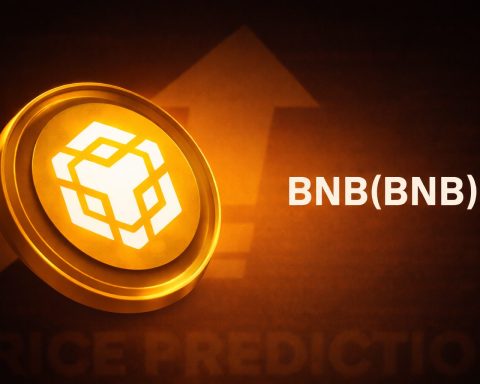Key takeaways
- Last close (Nov 21, 2025): Constellation Energy (NASDAQ: CEG) finished Friday at $338.11, down about 2.2% on the day, and is up roughly 51% year-to-date from $223.71 on January 1. [1]
- Valuation is rich but supported by growth: CEG trades on a trailing P/E of ~38.7 and a price-to-book of ~7.2, well above the energy-sector averages, with a consensus analyst target of ~$391 implying around 15–16% upside from current levels. [2]
- Big catalyst: A $1 billion loan from the U.S. Department of Energy (DOE) will help finance the restart of the 835 MW Crane Clean Energy Center (Three Mile Island Unit 1), expected to return to service in 2027 to supply 24/7 carbon‑free power to the grid and hyperscale data centers. [3]
- Today’s coverage (Nov 23, 2025) highlights CEG as an “AI infrastructure power play” (TalkMarkets), debates whether the DOE loan and Calpine deal justify further upside (Simply Wall St), and points out that CEG is a core holding in the Vanguard Utilities ETF (VPU). [4]
- Options and institutional flows show heavy institutional ownership (over 82%) and active “whale” options trading, with big put and call positions spanning strikes from $200 to $500. [5]
All figures and commentary are as of Sunday, November 23, 2025. U.S. markets are closed today; prices refer to Friday’s close unless otherwise noted.
1. Constellation Energy stock on November 23, 2025
With markets closed for the weekend, Constellation Energy’s latest trading snapshot comes from Friday, November 21:
- Last close: $338.11
- Day move: -$7.67 (≈ -2.2%)
- Intraday range: roughly $330.9 – $345
- Volume: just under 3 million shares [6]
From a bigger-picture perspective:
- YTD performance: up about 51% from $223.71 on January 1, 2025. [7]
- Market cap: around $105–106 billion. [8]
- 52‑week range: roughly $161 – $413, putting today’s level closer to the upper end of the range but below recent highs. [9]
- Valuation:
- Trailing P/E ~38.7, slightly above an estimated market average near 38.4 and far above the energy sector average (~12.7).
- PEG ratio ~2.36, suggesting investors are paying more than 2× expected earnings growth.
- Price‑to‑book ~7.2 and price‑to-sales ~4.5. [10]
- Profitability & balance sheet:
- Trailing EPS: $8.73; net income about $3.75 billion, net margin ~11%.
- ROE ~21.6%, ROA ~5.6%—strong profitability for a utility.
- Debt-to-equity ~0.49, with current and quick ratios above 1.3, indicating manageable leverage and liquidity. [11]
- Dividend:
- Yield is modest at about 0.46%, but the payout ratio ~18% (projected ~15% next year) leaves ample room to reinvest in growth and maintain dividend flexibility. [12]
On valuation alone, CEG is clearly priced more like a high‑growth AI infrastructure name than a traditional utility. The question for investors is whether the growth story—AI data centers, nuclear restarts, and the Calpine acquisition—can keep justifying that premium.
2. What’s new today: November 23, 2025 coverage of CEG
Several pieces published today help shape the narrative around Constellation Energy stock:
Simply Wall St: DOE loan and Calpine deal in focus
Simply Wall St published a piece titled “Should Constellation Energy’s (CEG) US$1B Federal Loan for Crane Clean Energy Center Drive Investor Action?” [13]
Key points from their analysis:
- The $1 billion DOE loan for the Crane Clean Energy Center (formerly Three Mile Island Unit 1) is seen as a de‑risking catalyst for CEG’s biggest growth project, aimed at delivering reliable, carbon‑free power to tech-sector clients like Microsoft. [14]
- The pending acquisition of Calpine is flagged as another major driver, broadening CEG’s mix of generation assets and complementing Crane by diversifying into natural gas, hydro, wind and solar at scale. [15]
- Using its internal forecasts, Simply Wall St cites a path to $26.7 billion in revenue and $3.6 billion in earnings by 2028, implying modest ~2.5% annual revenue growth and a ~$0.6 billion step up in earnings from current levels.
- Their fair-value model lands around $404 per share, about 20% above the current price, with community fair‑value estimates ranging widely from $230 to over $492—underlining how divided the market is on valuation and risk. [16]
They emphasize that while the loan strengthens CEG’s growth narrative, regulatory, capital‑intensity and decommissioning costs around nuclear remain non‑trivial risks.
TalkMarkets: “An AI trade with the right balance of risk and reward”
In a same‑day note syndicated by TalkMarkets, analyst Carl Delfeld calls Constellation Energy “an AI infrastructure power play and the largest owner of nuclear power plants in the US.” [17]
His argument in brief:
- CEG is both a regulated utility and a major participant in unregulated wholesale power markets, allowing it to benefit when power prices rise without being fully capped by regulation.
- AI and data centers have an effectively “near‑infinite demand” for around‑the‑clock electricity; nuclear’s 24/7 baseload profile makes CEG a natural supplier. [18]
- Recent earnings (he cites a quarter where adjusted operating earnings per share grew about 20% with high nuclear capacity factors) show underlying fundamental momentum. [19]
Delfeld frames CEG as a more conservative way to gain AI exposure compared with high‑multiple semiconductor and cloud stocks—an argument that dovetails with today’s ETF commentary (see below).
24/7 Wall St: CEG as a core holding in a “bubble‑proof” utilities ETF
A 24/7 Wall St article, “2 World Class Funds That Avoid The AI Bubble and Mag 7 Stocks,” highlights the Vanguard Utilities Index Fund ETF (VPU) as one way to sidestep an AI mega‑cap bubble while still playing the power‑demand story. [20]
In that ETF:
- Constellation Energy is the second‑largest holding at 6.89% of assets, behind only NextEra Energy. [21]
That’s a clear signal of how embedded CEG now is in institutional and retirement portfolios: even investors trying to avoid AI hype are indirectly exposed to AI‑driven grid demand via utilities ETFs where CEG is a core position.
Nuclear‑industry commentary and local policy news
- A nuclear‑industry news blog summarizing CNN’s coverage notes that the Trump administration’s DOE has loaned Constellation $1 billion to restart the reactor at the plant formerly known as Three Mile Island, under a 2024 deal with Microsoft to offset the tech giant’s data‑center electricity use. It highlights AI-driven power demand growth and the carbon‑free profile of nuclear, while also pointing out the unresolved challenge of long‑term nuclear waste storage. [22]
- The PA Environment Digest Blog lists an upcoming December 2 air‑quality permit hearing for Constellation’s Limerick Nuclear Power Plant as one of the state’s environmental and energy regulatory events, underscoring the ongoing permit and policy scrutiny facing the company’s nuclear fleet in Pennsylvania. [23]
None of these pieces change the near‑term earnings outlook on their own, but together they reinforce the picture of CEG as:
- A central player in U.S. nuclear and grid reliability policy.
- Increasingly tied to AI data center power demand.
- Operating under heightened political and regulatory attention.
3. The $1 billion DOE loan and the Crane Clean Energy Center
The Crane Clean Energy Center is the core of Constellation’s growth story right now—and the reason the stock has featured so heavily in this week’s headlines.
What the loan does
On November 18, 2025, the U.S. Department of Energy’s Loan Programs Office announced it had closed a $1 billion loan to Constellation Energy Generation, LLC to help finance the Crane Clean Energy Center, an 835 MW nuclear plant on the Susquehanna River in Londonderry Township, Pennsylvania. [24]
Key details from DOE and Constellation:
- The loan is funded by the Energy Dominance Financing Program and is an interest‑bearing facility that lowers CEG’s cost of capital and leverages private investment. [25]
- Crane involves restarting a reactor that shut down in 2019, but was never fully decommissioned. Reuters notes the unit is expected to be back online in 2027, with the project already ~80% staffed and major equipment inspections well advanced. [26]
- The facility is projected to provide around-the-clock carbon‑free power equivalent to roughly 800,000 homes, bolstering grid reliability across the PJM region. [27]
Economic and AI implications
Constellation’s own economic impact analysis (cited in its press release) suggests: [28]
- Around 3,400 direct and indirect jobs linked to the restart.
- More than $16 billion added to Pennsylvania’s GDP over time.
- Over $3 billion in state and federal tax revenues.
Politically, the DOE release and Constellation’s statement explicitly frame the project as part of President Trump’s nuclear and “AI race” agenda, stressing:
- Surging power demand from electrification and AI data centers.
- The need for always‑on nuclear baseload to keep prices in check while supporting data‑center growth and re‑shoring of manufacturing. [29]
For investors, the loan:
- Reduces financing risk for a capital‑intensive nuclear restart.
- Signals federal backing for CEG’s role in the nuclear “renaissance.”
- Ties Constellation even more tightly to the policy fortunes of nuclear and AI under the current administration—both an opportunity and a source of headline risk.
4. Q3 2025 earnings: slight EPS miss, strong cash flow
Constellation released its Q3 2025 results on November 7. [30]
Headline numbers:
- GAAP EPS: $2.97 vs. $3.82 a year earlier (pressure from fair-value and other non‑recurring items).
- Adjusted operating EPS: $3.04 vs. $2.74 in Q3 2024—up around 11% year‑on‑year.
- Consensus vs. actual: Zacks/MarketBeat data show Q3 adjusted EPS of $3.04 came in about $0.02 below the $3.06 analyst consensus—a tiny miss. [31]
- Revenue: up roughly 0.3% year‑over‑year, which is modest but positive. [32]
Guidance and balance sheet:
- Full‑year 2025 adjusted operating EPS guidance was narrowed to $9.05–$9.45, versus a prior range of $8.90–$9.60. The Zacks consensus sits near $9.44, close to the high end of guidance. [33]
- As of September 30, 2025:
- Cash & equivalents: $3.96 billion (up from $3.02 billion at year‑end 2024).
- Long‑term debt: $7.27 billion (slightly down from $7.38 billion).
- Operating cash flow (first nine months of 2025): $3.43 billion vs. cash used of $1.45 billion in the prior-year period—an enormous swing that strengthens the investment‑grade balance sheet. [34]
Operationally, Constellation continues to showcase nuclear reliability:
- Q3 nuclear generation volumes rose and capacity factors remained in the mid‑90s% range, according to the company and third‑party earnings recaps. [35]
The upshot: fundamentals look solid, but the stock is priced for continued execution—especially on Crane, the Calpine integration, and signing/expanding long‑term data‑center contracts.
5. Calpine deal and leadership changes: building a “data‑economy” utility
On November 21, Constellation announced a reshuffling of its senior leadership “ahead of Calpine deal closing,” expected in Q4 2025 subject to Department of Justice clearance and other conditions. [36]
Highlights:
- Strategic focus on the data economy:
- Current CFO Dan Eggers has been promoted to Senior Executive Vice President, Finance and Data Economy, explicitly linking the finance function with CEG’s high‑growth, AI‑driven power business.
- Shane Smith becomes Executive Vice President and Chief Financial Officer. [37]
- Expanded generation leadership:
- Calpine executive Andrew Novotny will join as Senior Executive Vice President, Constellation Power Operations, and President & CEO of Calpine, overseeing Calpine plus CEG’s gas, hydro, solar and wind fleet. [38]
The messaging is clear: Constellation is positioning the combined Constellation‑Calpine platform as an “industry‑leading reliable and clean generation fleet” designed to power the AI/data economy and meet surging demand from households, businesses and data centers. [39]
For shareholders, the Calpine deal adds:
- More flexible gas‑fired capacity to backstop nuclear and renewables.
- Greater geographic and fuel diversification.
- Integration risk—but also meaningful potential for synergies and stronger bargaining power with big corporate and tech customers.
6. AI, data centers and Constellation’s growth narrative
Several recent analyses—including today’s TalkMarkets note and yesterday’s Motley Fool piece—frame Constellation as a direct beneficiary of AI data‑center demand: [40]
- AI‑driven power demand:
- Research from Goldman Sachs, cited in a Motley Fool/Sharewise summary, projects global data‑center power demand rising 50% by 2027 and up to 165% by decade‑end. [41]
- Key tech customers:
- Constellation has struck long‑term power agreements with tech giants including Meta and Microsoft, with the latter linked specifically to the Crane restart project. [42]
- Nuclear as the “go‑to” for hyperscalers:
- CEG is repeatedly described as a leader in nuclear energy with a portfolio of renewable and other clean assets, making it a “go‑to choice for hyperscalers seeking clean, reliable, uninterrupted power.” [43]
This AI narrative matters because it helps explain why:
- A utilities stock trades at a tech‑like multiple.
- CEG has climbed more than 50% in 2025 even though revenue growth is modest. [44]
Investors who buy into this narrative are essentially betting that AI’s power needs will keep rising, that the policy environment remains favorable to nuclear, and that CEG will continue to secure lucrative long‑term contracts with data‑center operators.
7. Analyst targets, institutional positioning and options flows
Wall Street view
MarketBeat data show that, as of today: [45]
- Consensus rating:Moderate Buy (rating score 2.88 out of 4).
- Analyst coverage: 17 analysts, with no Sell ratings reported.
- Average 12‑month target:$390.94, implying ~15.6% upside from $338.11.
- Target range:$258 (low) to $478 (high).
That high end aligns with a recent Wells Fargo price target of $478, while other firms like Citigroup and Mizuho sit in the mid‑$300s to high‑$300s range, according to a Benzinga options recap. [46]
Institutional ownership and ETFs
- Institutional ownership: around 82% of shares outstanding, with insiders holding only ~0.23%.
- Top holders include Vanguard Group (≈12.3%), Capital International Investors (8.4%), State Street (5.8%) and others. [47]
- In the Vanguard Utilities ETF (VPU), CEG is the #2 holding at 6.89% of the portfolio, behind only NextEra Energy. [48]
This level of institutional and ETF presence can support liquidity and reduce volatility, but it also means CEG is tightly linked to flows into/out of utilities and income‑oriented funds.
Options market: whales active across a wide price band
Benzinga’s unusual‑options report from November 21 highlights intense options activity in CEG: [49]
- 42 large options trades detected over the recent period.
- 30 puts vs. 12 calls, with roughly $2.5 million in put premium and $0.5 million in call premium traded.
- Despite heavy put activity, Benzinga characterizes the overall stance from “whales” as “noticeably bullish”, since some of those puts may reflect hedges rather than outright bearish bets.
- The most active strikes cluster between $200 and $500, reflecting a wide band of potential price outcomes that big traders are positioning around.
- At the time of that report, the stock was near $343, with its RSI approaching oversold territory, suggesting some technical traders see room for a bounce. [50]
For long‑term investors, options noise is less important than fundamentals—but it does show CEG is firmly on the radar of sophisticated, large‑capital traders.
8. Key risks to watch
Even as the stock rides powerful themes—AI, nuclear restarts, and policy tailwinds—there are non‑trivial risks:
- Regulatory and political risk
- The DOE loan and fast‑tracked approvals are tied to current Trump‑era energy and nuclear policy. A shift in administration or congressional priorities could change the pace or economics of nuclear restarts. [51]
- Ongoing air‑quality and environmental permit reviews (like the Limerick hearing in Pennsylvania) could impose additional costs or restrictions. [52]
- Project execution risk at Crane and across the fleet
- Nuclear restarts are complex; timelines and budgets can slip, and additional safety upgrades may be required by regulators.
- While Reuters and Constellation say the restart is ahead of schedule and over 80% staffed, the project is still in the inspection and licensing phase. [53]
- Valuation and interest‑rate sensitivity
- CEG’s multiples (P/E, P/B, PEG) are well above sector norms. Any disappointment in earnings, DOE policy, AI demand growth, or the Calpine integration could trigger a valuation correction. [54]
- As a capital‑intensive utility with big growth projects, Constellation remains sensitive to interest rates and credit conditions, even with DOE support.
- Nuclear‑specific risks
- Public concerns over safety and waste disposal remain, as highlighted in nuclear‑industry commentary. A negative incident anywhere in the industry, or setbacks in long‑term waste policy, could affect sentiment and regulatory stance. [55]
9. Bottom line for Constellation Energy stock on November 23, 2025
On November 23, 2025, the story around Constellation Energy (CEG) looks like this:
- The share price has doubled from early 2024 levels and is up ~51% year‑to‑date, trading near $338 with a valuation more typical of growth tech than traditional utilities. [56]
- The company has strong underlying fundamentals (high ROE, solid cash flow, moderate leverage), but its earnings growth is only modestly above typical utilities—meaning much of the premium is tied to Crane, Calpine, and AI data‑center demand rather than current earnings alone. [57]
- Today’s articles from Simply Wall St and TalkMarkets reinforce that investors are increasingly viewing CEG as an AI power‑infrastructure stock, not just a boring utility, while 24/7 Wall St shows it has become a cornerstone holding in utilities ETFs aiming to sidestep the AI bubble itself. [58]
For prospective investors, the key questions are:
- Do you believe AI and electrification will keep driving power demand high enough to justify premium valuations for nuclear and clean‑energy baseload providers like CEG?
- Are you comfortable with nuclear policy and project‑execution risk, especially around the Crane restart and the Calpine integration?
- Does a mid‑teens upside to the average analyst price target, plus optionality from AI‑driven growth, adequately compensate for the valuation, regulatory and headline risks?
If your answer to all three is “yes,” the picture painted by today’s news suggests Constellation Energy remains one of the most direct and liquid ways to play the AI‑driven nuclear power theme in U.S. markets.
If you’re more cautious on policy volatility or nuclear restarts—or you prefer not to pay nearly 39× trailing earnings for a utility—holding exposure via diversified vehicles like VPU or waiting for a pullback may look more prudent.
This article is for informational and educational purposes only and does not constitute investment advice, a recommendation, or a solicitation to buy or sell any security. Always conduct your own research and consider your financial situation and risk tolerance, or consult a licensed financial advisor, before making investment decisions.
References
1. stoculator.com, 2. www.marketbeat.com, 3. www.energy.gov, 4. talkmarkets.com, 5. www.marketbeat.com, 6. stoculator.com, 7. www.marketbeat.com, 8. www.marketbeat.com, 9. www.sofi.com, 10. www.marketbeat.com, 11. www.marketbeat.com, 12. www.marketbeat.com, 13. simplywall.st, 14. simplywall.st, 15. simplywall.st, 16. simplywall.st, 17. talkmarkets.com, 18. talkmarkets.com, 19. talkmarkets.com, 20. 247wallst.com, 21. 247wallst.com, 22. nuclear-news.net, 23. paenvironmentdaily.blogspot.com, 24. www.energy.gov, 25. www.energy.gov, 26. www.reuters.com, 27. www.energy.gov, 28. www.constellationenergy.com, 29. www.energy.gov, 30. www.constellationenergy.com, 31. www.nasdaq.com, 32. www.nasdaq.com, 33. www.nasdaq.com, 34. www.nasdaq.com, 35. www.constellationenergy.com, 36. www.constellationenergy.com, 37. www.constellationenergy.com, 38. www.constellationenergy.com, 39. www.constellationenergy.com, 40. talkmarkets.com, 41. www.sharewise.com, 42. www.reuters.com, 43. www.sharewise.com, 44. www.marketbeat.com, 45. www.marketbeat.com, 46. www.benzinga.com, 47. www.marketbeat.com, 48. 247wallst.com, 49. www.benzinga.com, 50. www.benzinga.com, 51. www.energy.gov, 52. paenvironmentdaily.blogspot.com, 53. www.reuters.com, 54. www.marketbeat.com, 55. nuclear-news.net, 56. www.marketbeat.com, 57. www.nasdaq.com, 58. simplywall.st










